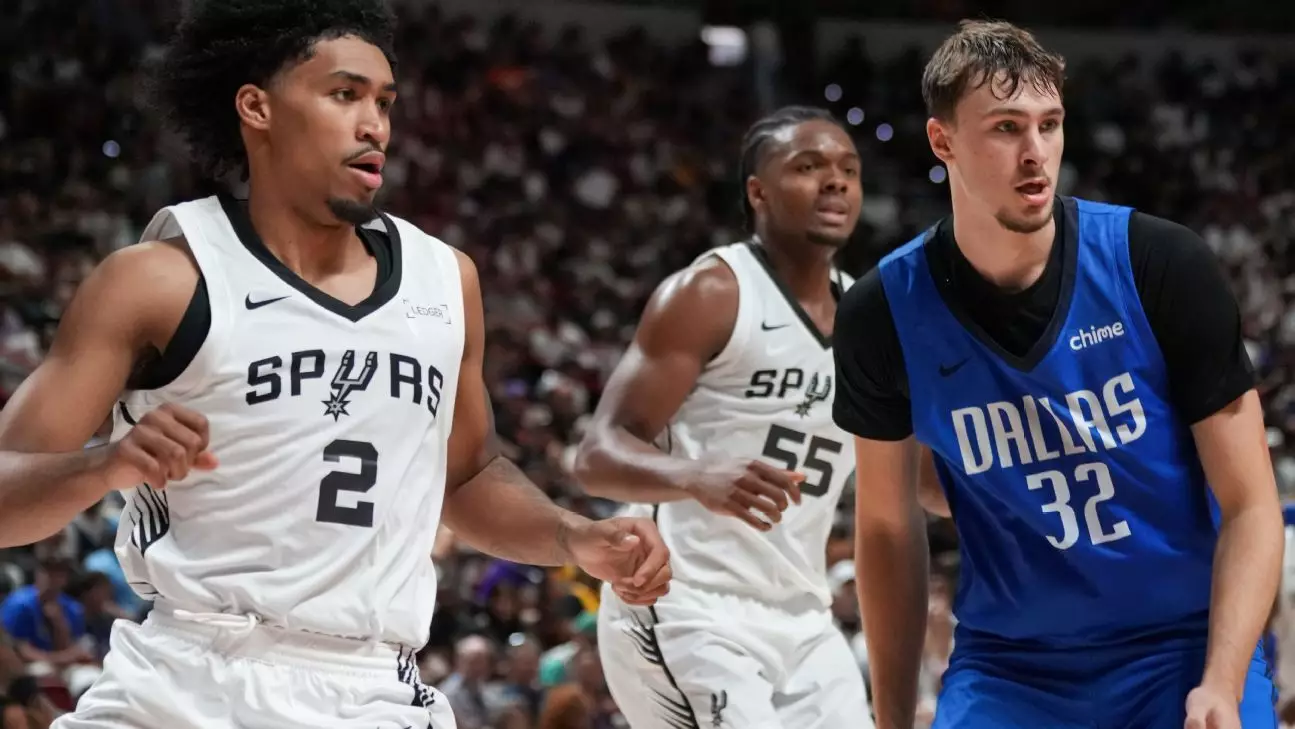In the ever-evolving landscape of professional basketball, the spectacle of young phenoms often captivates the public’s imagination. The recent showdown between the top two prospects of the 2025 NBA draft, Cooper Flagg and Dylan Harper, exemplifies both the breathless optimism and the sobering realities of early hype. While their performances in the summer league undoubtedly illuminate glimpses of potential brilliance, they also serve as a stark reminder of how fleeting and misleading initial impressions can be when magnified through a media lens eager for sensational narratives.
Flagg’s 31-point haul, loaded with highlight-reel dunks and tenacious drives, sparks excitement about his future. Yet, beneath that enthusiasm lurks a critical question: does scoring in summer league truly indicate readiness for the NBA’s grueling grind? The truth is, summer league shows are often more about spectacle than substance. They are exhibition matches, designed to energize fans and test the waters, not definitive benchmarks of skill and consistency. When evaluating prospects like Flagg, analysts must exercise caution. Overestimating summer league displays risks putting undue pressure on young players who are still adjusting to the pace and physicality of professional basketball.
Similarly, Harper’s return from injury brought eager anticipation, but criticism is warranted for labeling a single summer game as a harbinger of guaranteed success. His performance, a solid 16 points in 20 minutes, is promising but represents only a small chapter in a long story. The hype surrounding Dylan Harper’s athleticism and competitive drive could create an inflated sense of his talent. Young athletes often face relentless scrutiny early in their careers, which might impact their mental health and development if not tempered with realistic expectations. The league needs a balanced perspective—acknowledging raw talent without elevating it to undue pedestal status.
Media and Fan Obsession: Fueling Unrealistic Expectations
The event was attended by notable celebrities and former stars, reflecting a culture increasingly obsessed with superstar phenomena. Such environments can amplify the myth-making process surrounding these young players. Media outlets tend to focus on the most eye-catching moments—dunks, blocks, and flashy plays—while neglecting the nuanced aspects of player development like decision-making, consistency, and resilience. This bias fosters a narrative that one game or one spectacular play defines a player’s worth, often ignoring the broader context of their growth.
In this scenario, the exposure of Harper and Flagg to such adulation is double-edged. It can serve as motivation, but for some, it might also become a burden. The pressure to live up to hype can distort a young athlete’s focus, pushing them toward short-term flashes of brilliance at the expense of long-term skill refinement. Moreover, fans’ excitement sometimes borders on idealization, which can lead to disappointment when reality settles in—when that potential clash with adversity or inconsistency erodes their shine.
The league’s danger is in feeding the beast of hype without adequate checks—transforming promising prospects into commodities of fleeting attention. Instead, a more responsible narrative would emphasize steady growth, adaptability, and mental fortitude—traits that truly illuminate future stars, often beyond their first summer league debut.
The Broader Implication: A Center-Left Perspective on Youth Development and Media Responsibility
From a center-wing liberal perspective, the obsession with instant stardom reflects a societal tendency to prioritize spectacle over substance. The commercialization of young athletes mirrors a broader pattern: an impatience for results, a culture of quick gratification, and the commodification of potential. While players like Flagg and Harper undoubtedly possess exceptional talent, society bears some responsibility in nurturing their development without subjecting them to disproportionate scrutiny and unrealistic expectations.
Investing in comprehensive support systems—mental health resources, mentorship, and education—can assist promising players in navigating their careers beyond initial hype. It also underscores the importance of media literacy, both for fans and players, emphasizing that a single game does not define a career. The league and its stakeholders should advocate for a balanced narrative—celebrating raw talent but recognizing that true greatness is forged through resilience, consistency, and maturation over time.
In essence, the fascination with these young prospects reveals a societal desire for immediate gratification and heroism, often at the expense of patience and depth. As spectators and participants in this ecosystem, we must challenge ourselves to look past the highlights and appreciate the complex, nuanced journey of genuine athletic development. Only then can we foster an environment where promising careers are built on realistic expectations and sustainable growth, rather than fleeting moments of brilliance that fade as quickly as they appeared.



Leave a Reply